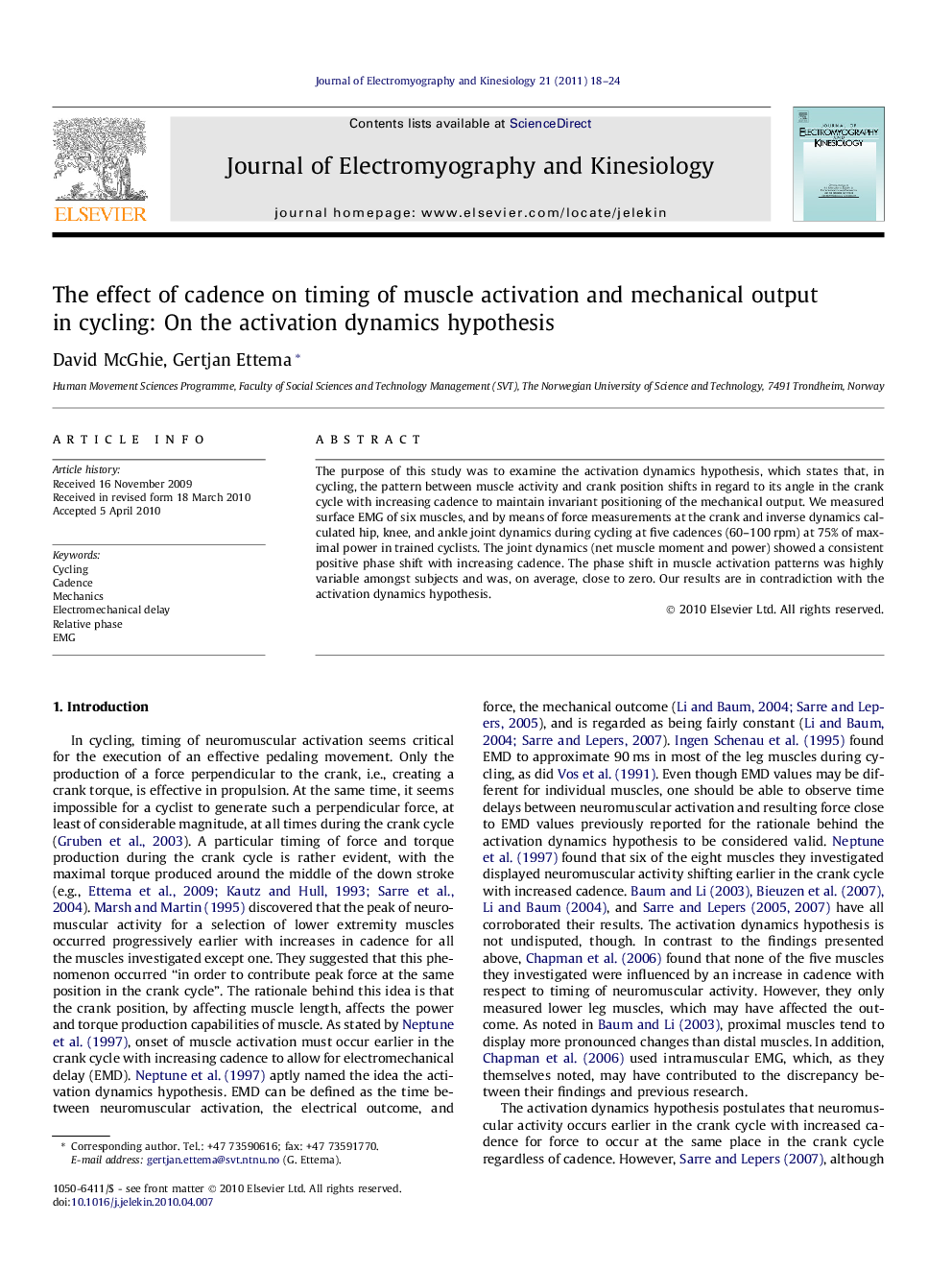| Article ID | Journal | Published Year | Pages | File Type |
|---|---|---|---|---|
| 4065091 | Journal of Electromyography and Kinesiology | 2011 | 7 Pages |
The purpose of this study was to examine the activation dynamics hypothesis, which states that, in cycling, the pattern between muscle activity and crank position shifts in regard to its angle in the crank cycle with increasing cadence to maintain invariant positioning of the mechanical output. We measured surface EMG of six muscles, and by means of force measurements at the crank and inverse dynamics calculated hip, knee, and ankle joint dynamics during cycling at five cadences (60–100 rpm) at 75% of maximal power in trained cyclists. The joint dynamics (net muscle moment and power) showed a consistent positive phase shift with increasing cadence. The phase shift in muscle activation patterns was highly variable amongst subjects and was, on average, close to zero. Our results are in contradiction with the activation dynamics hypothesis.
